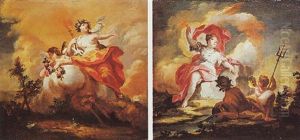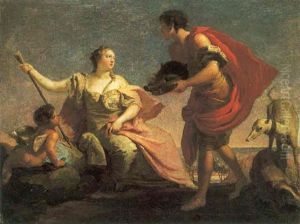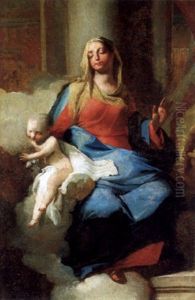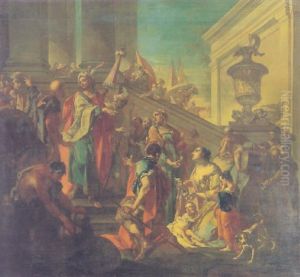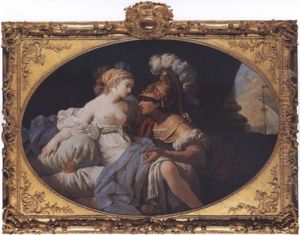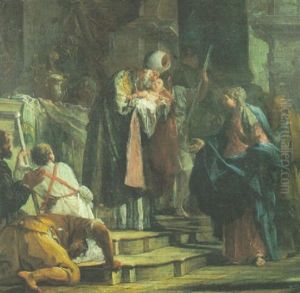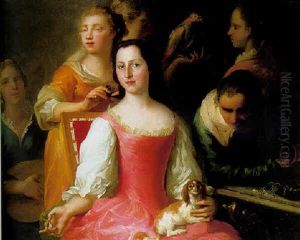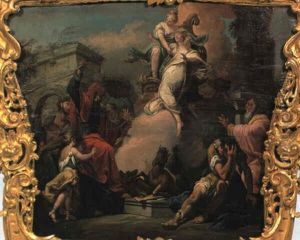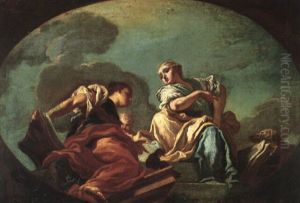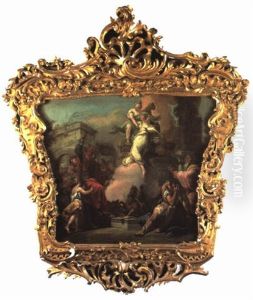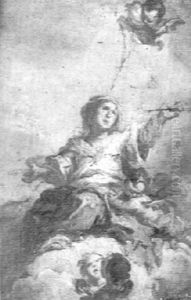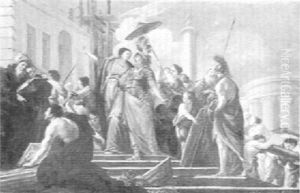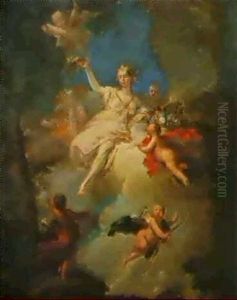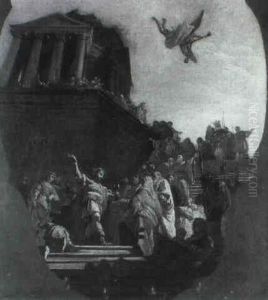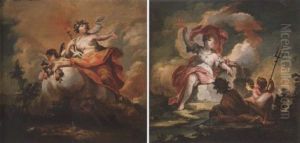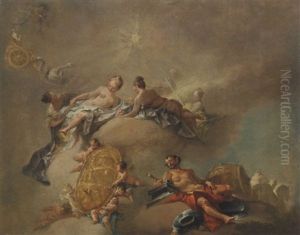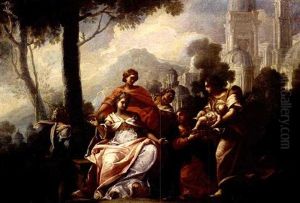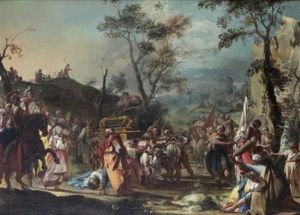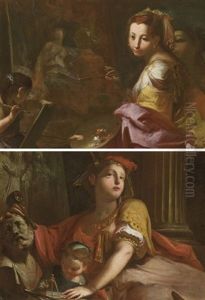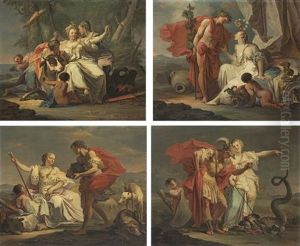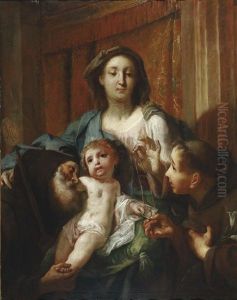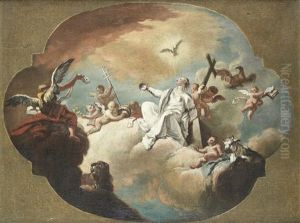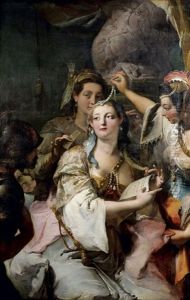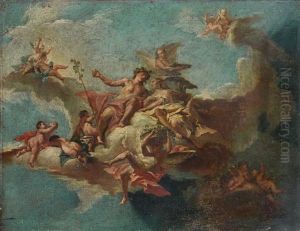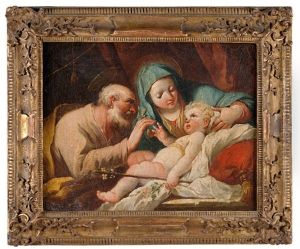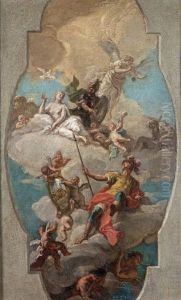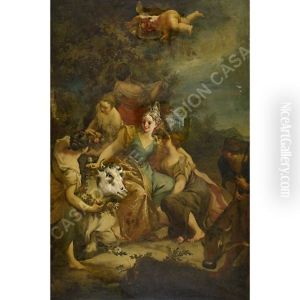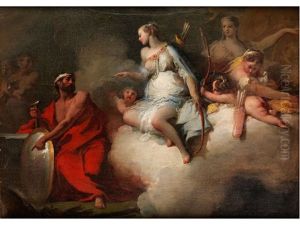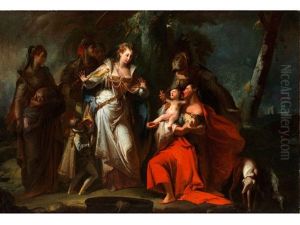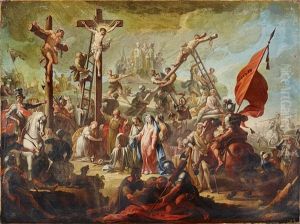Giovanni Battista Crosato Paintings
Giovanni Battista Crosato was an Italian painter of the Rococo period, born in 1697, in the city of Biella, Piedmont. He is primarily known for his fresco painting and decorative work, which was highly sought after during the height of his career. Crosato showed artistic talent at an early age and was initially trained in Turin. He later moved to Venice, where he became influenced by the grandeur and style of Venetian painting, which is evident in his use of color and dynamic compositions.
Crosato's work is characterized by its lightness, elegance, and a playful use of mythological and allegorical subjects, typical of the Rococo style that flourished in the early 18th century. His frescoes are marked by a sense of movement and an airiness that was in contrast to the heavier, more solemn Baroque style that preceded it. He was adept at creating illusions with his art, often painting trompe-l'oeil ceilings that appeared to open up into the sky or to other imaginary realms.
While his work was predominantly in Northern Italy, Crosato's reputation allowed him to accept commissions from other parts of Europe as well. He worked in various cities including Milan, Venice, and Vienna, leaving behind a legacy of opulent and sophisticated artistry. One of his significant contributions was the decoration of the Palazzo Clerici's grand hall in Milan, which stands as a testament to his skill and artistic vision.
Unfortunately, despite his success during his lifetime, Crosato's work fell into relative obscurity after his death in 1758. The changing tastes of the art world and the rise of Neoclassicism overshadowed the Rococo style that Crosato had mastered. However, art historians have since reevaluated his contributions, and his works are now recognized for their importance in the context of 18th-century art. They can be found in various churches and palaces, appreciated for their beauty, technical proficiency, and as examples of the last flourish of the Rococo movement.
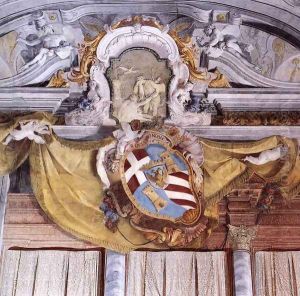
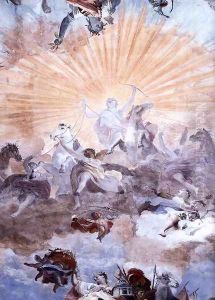
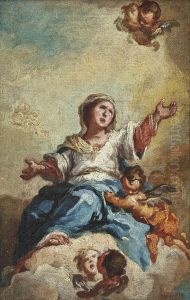
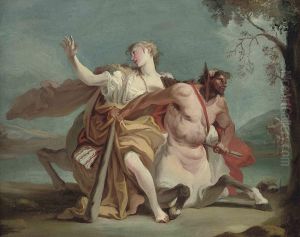
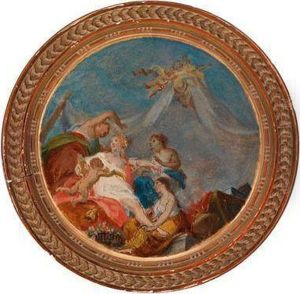
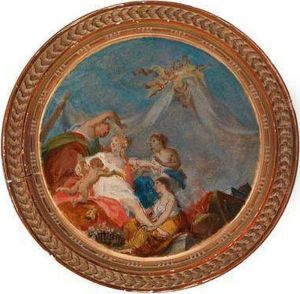
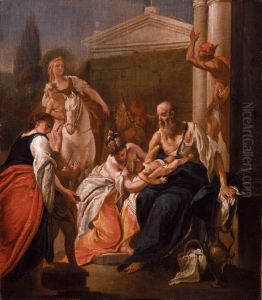
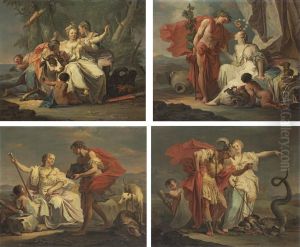
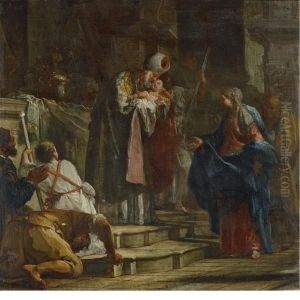
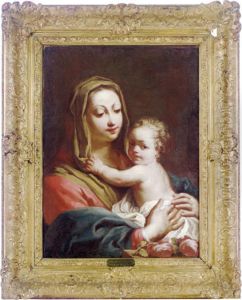
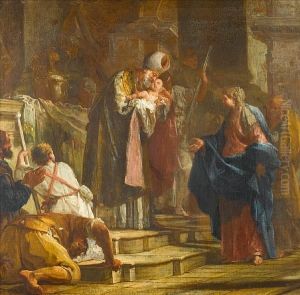
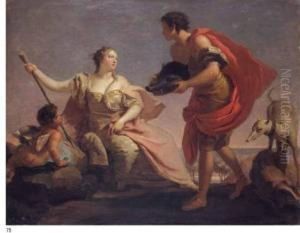
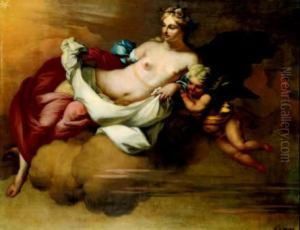
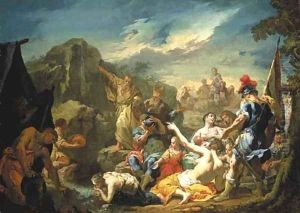
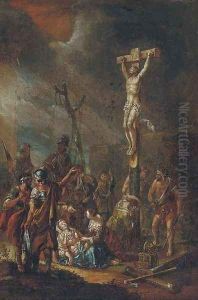
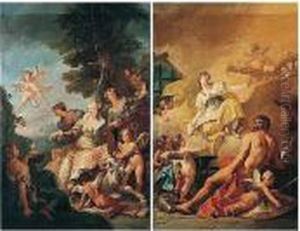
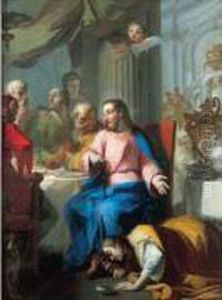
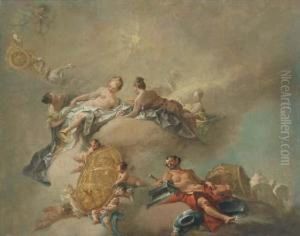
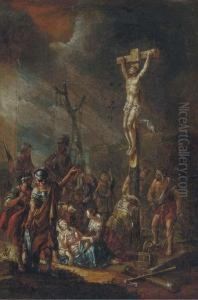
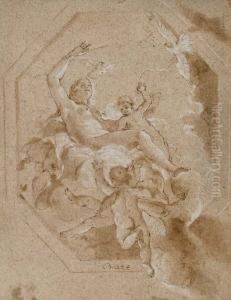
![Le Chatiment D'oza [, The Punishment Of Oza, Oil On Canvas]](https://www.niceartgallery.com/imgs/1251062/s/giovanni-battista-crosato-le-chatiment-doza-the-punishment-of-oza-oil-on-canvas-1a92aaf8.jpg)
